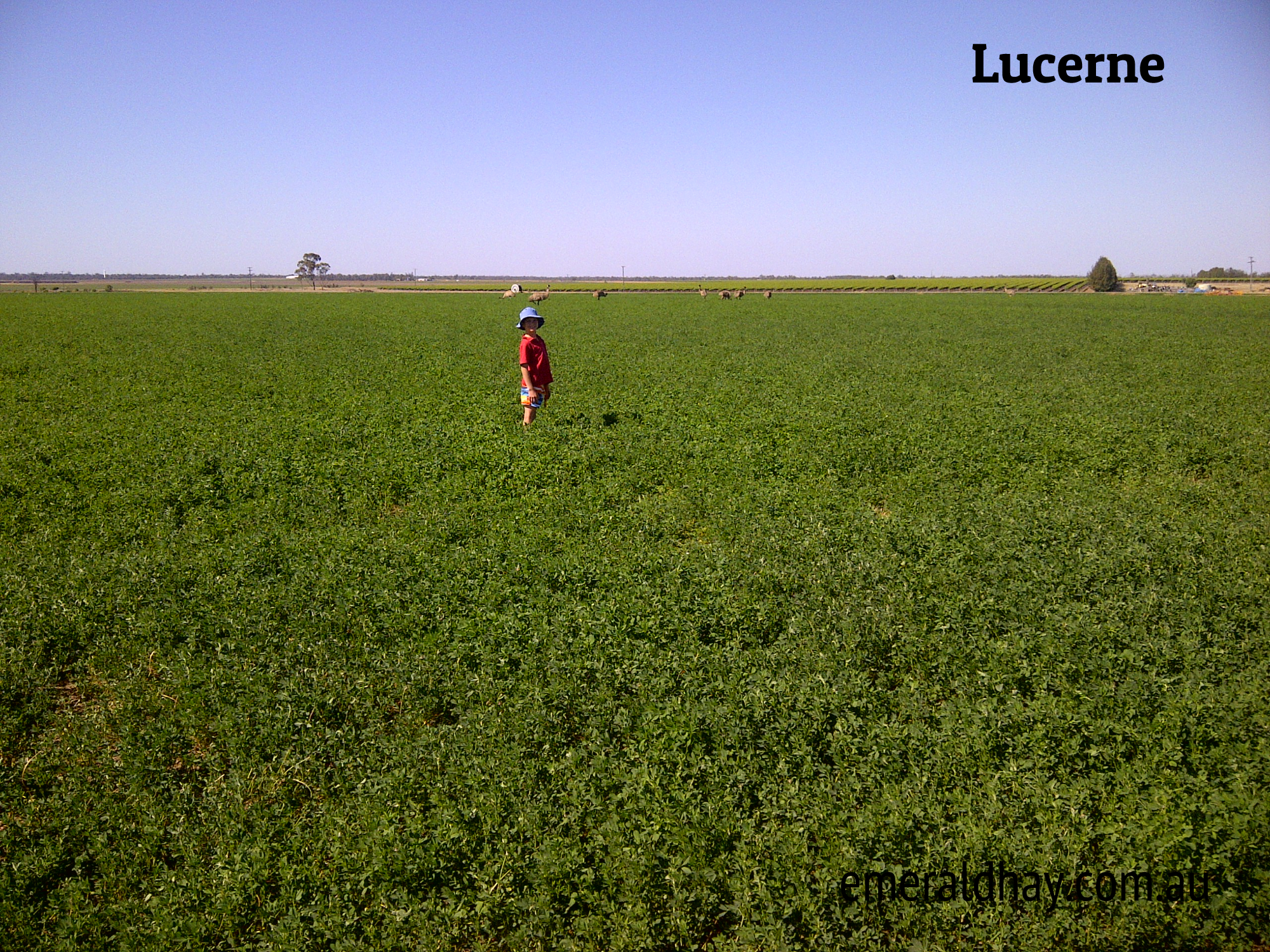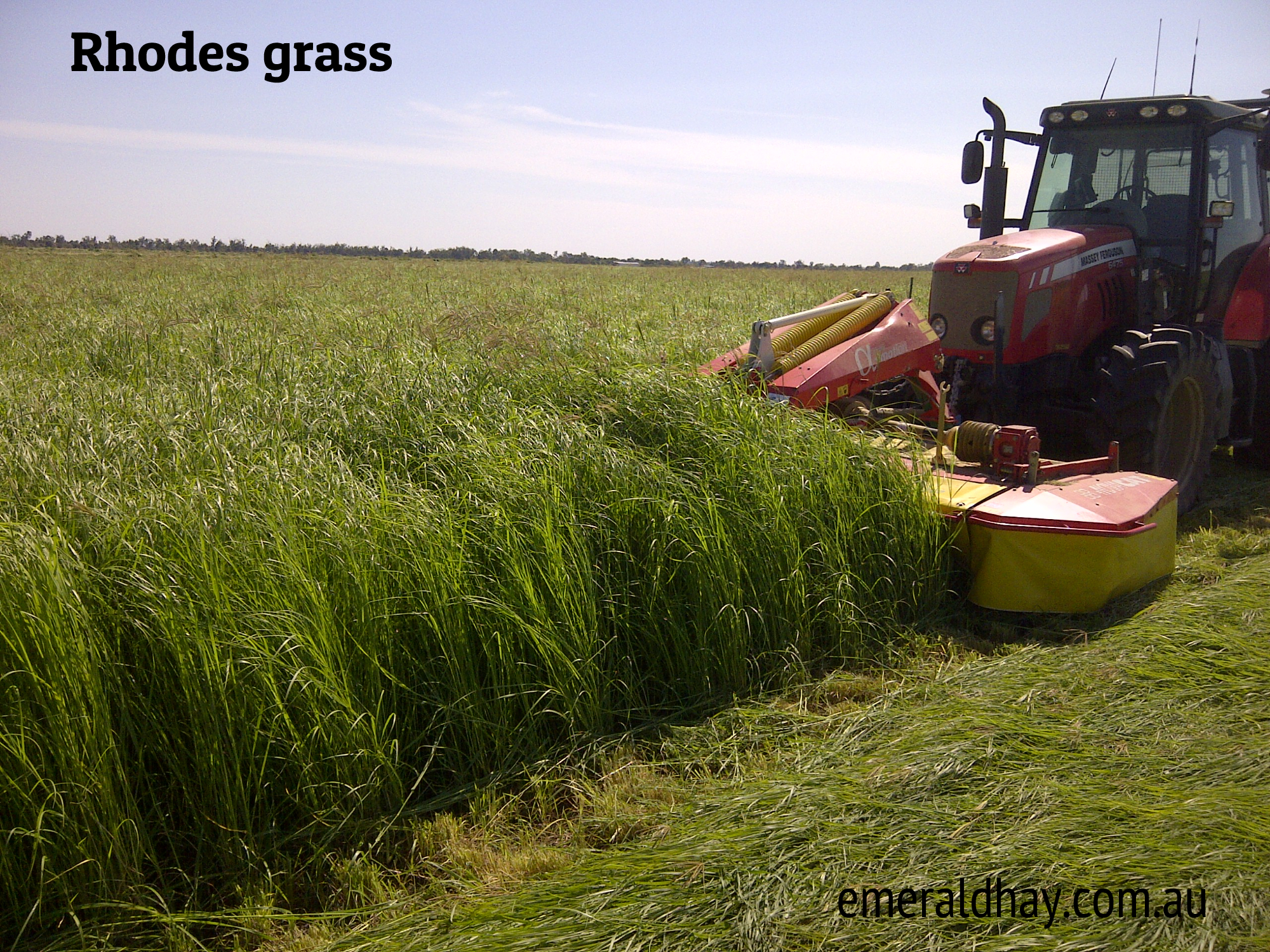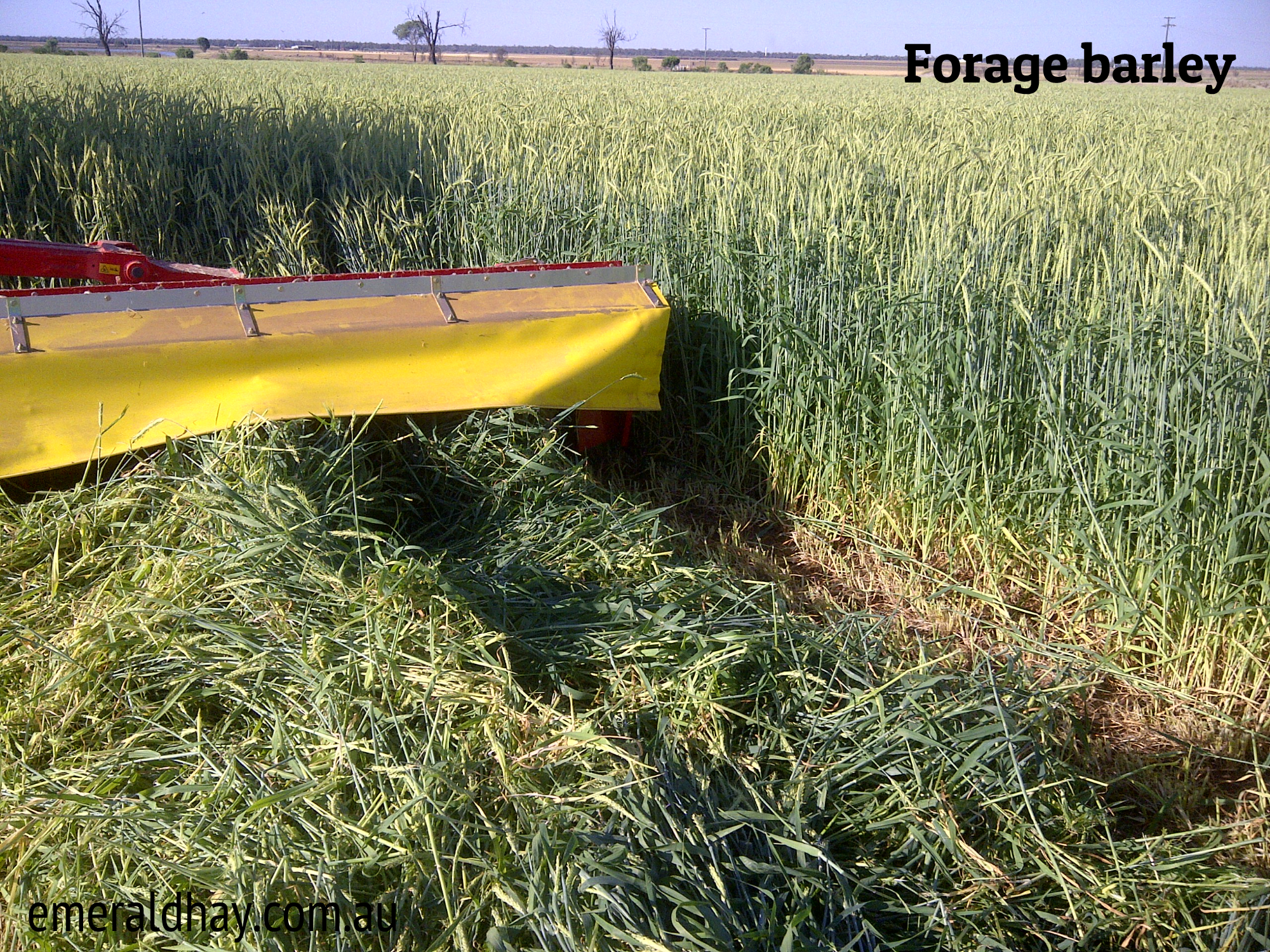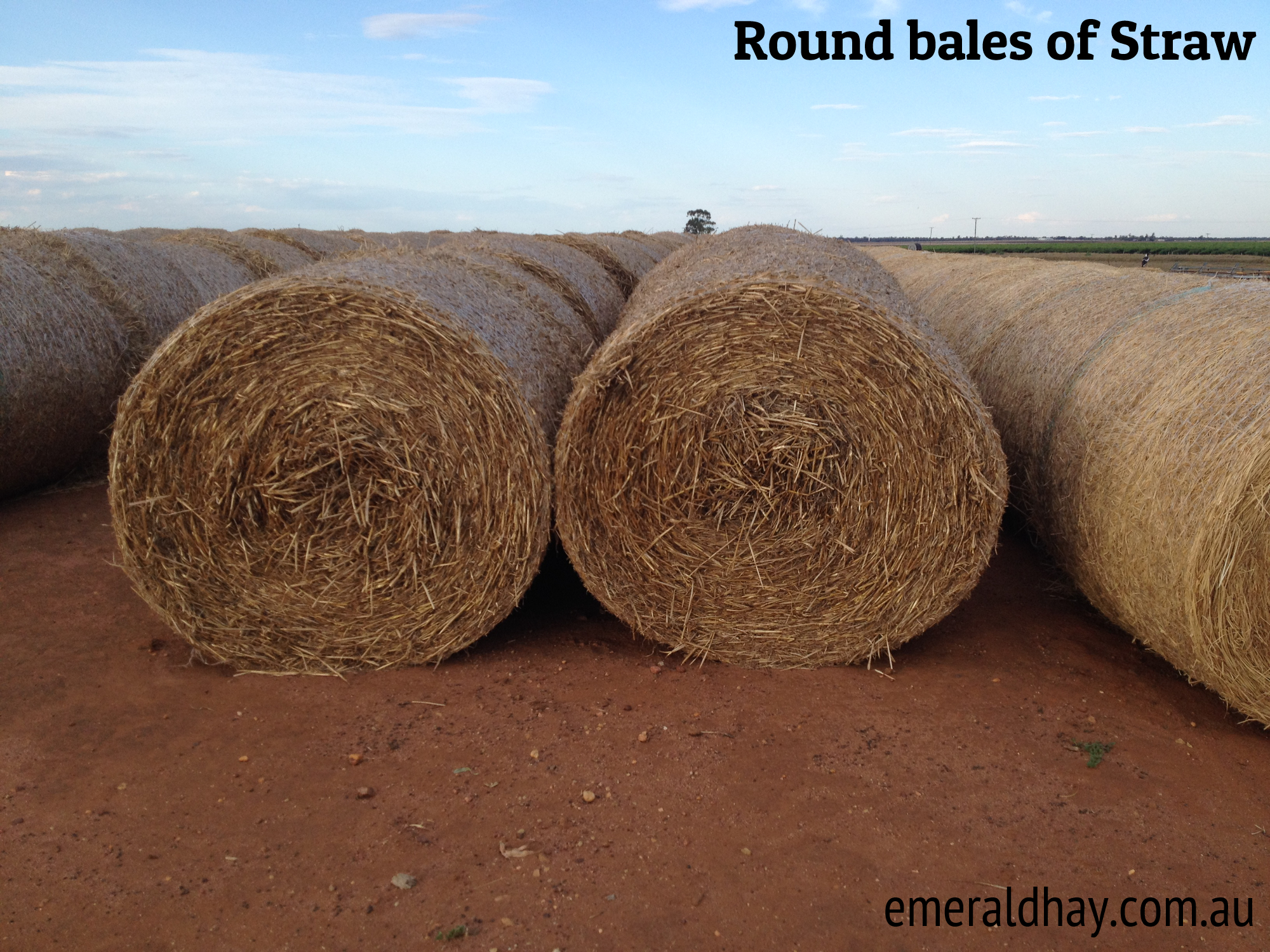Hay and mulch
Phone: 0422 638979 or 0412 622702
Types of Hay
Lucerne: 
We grow the newer varieties of lucerne which are fine stemmed & produce lots of leaves making them quick to cure. All lucerne hay is grown under a centre pivot irrigator producing an uniform crop which makes for weed free & good solid bales. Mowing & carting of lucerne are done during the day, while raking & baling is done at night/early morning utilizing the moisture to maximize leaf retention & produce softer hay. In the Central Highlands' climate it takes only 3 to 4 days to cure lucerne hay, thus reducing bleaching & risk of weather damage. We cut lucerne hay all year round depending on irrigation water availability.
Rhodes Grass: 
We grow Katambora & Reclaimer variety of rhodes grass which has thinner stems & is suited to hay production. Rhodes grass hay is handled in much the same way as lucerne. We try to cut the grass when it is just coming out in head, this gives plenty of leaf & smaller stems, making a high quality product suitable to feed horses, weaners, bulls & in feedlots. Available in small, large squares & round bales. We have switched from growing forage sorghum to rhodes grass as feedback from customers has told us there is a lot less wastage occurring and it is more suitable for horses.
Forage barley:
Available in both small & large squares & round bales. It is made & handled with the same care as the lucerne, making a high quality product for chaffing, horse feed, weaning, bull preparation & feed lots. Chops up well for mixing in feedlot rations. Look for it around Sept/Oct.
Dolichus Lablab:
Lablab is a broad-leafed tropical legume & is handled in a slightly different way. As it has very ropey & strong stems when cut, it requires longer curing time (often over a week or two). We bale lablab hay at two different times in the year. The first cut is usually around March which is very good quality - plenty of leaf & smaller stems. If done, the second cut is around July after harvesting the seed. This cut has bigger stalks & lower leaf retention, but is still very palatable to adult cattle. Lablab hay is mainly round baled & large squared, but small squares can be made to order. Suitable for both horses and cattle. Some horse customers have found that their horses take readily to it & do very well on it.
Cereal Straw:
We often bale barley or wheat stubble/straw for uses including roughage for feedlot rations, garden mulch & mine site rehabilitation work. We bale a limited number of both small square & round bales to start with & go off demand after that. Normally we harvest the grain around late Sept / October, so would like orders in by then.
Have wheat straw in 4x4 round bales & 3x3x8 large squares. Clean & weed free. Also, make good bedding for animal houses.
Mulch:
There is a degree of skill & good decision making in producing top quality hay, but luck with the weather plays a big part. Sometimes we get caught with unexpected rain on our cut hay in the paddock. If we get too much rain the quality is lost, so the hay is allowed to dry & is baled. It is set aside for use as mulch . This mulch makes good garden mulch as leaf content is still quite high & is readily broken down to improve soil quality. Also, there is usually very little weed seeds in it. It is also useful in mine rehabilitation & building site run off containement.